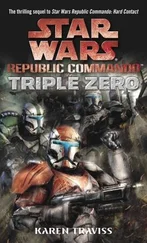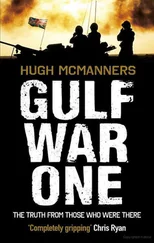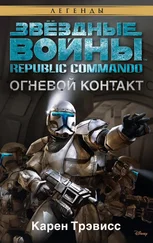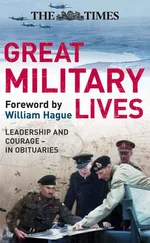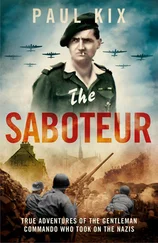Hugh McManners - Falklands Commando
Здесь есть возможность читать онлайн «Hugh McManners - Falklands Commando» весь текст электронной книги совершенно бесплатно (целиком полную версию без сокращений). В некоторых случаях можно слушать аудио, скачать через торрент в формате fb2 и присутствует краткое содержание. Город: London, Год выпуска: 2014, ISBN: 2014, Издательство: Nightstrike Publishing, Жанр: nonf_military, Биографии и Мемуары, на английском языке. Описание произведения, (предисловие) а так же отзывы посетителей доступны на портале библиотеки ЛибКат.
- Название:Falklands Commando
- Автор:
- Издательство:Nightstrike Publishing
- Жанр:
- Год:2014
- Город:London
- ISBN:978-0-992-81540-0
- Рейтинг книги:4 / 5. Голосов: 1
-
Избранное:Добавить в избранное
- Отзывы:
-
Ваша оценка:
- 80
- 1
- 2
- 3
- 4
- 5
Falklands Commando: краткое содержание, описание и аннотация
Предлагаем к чтению аннотацию, описание, краткое содержание или предисловие (зависит от того, что написал сам автор книги «Falklands Commando»). Если вы не нашли необходимую информацию о книге — напишите в комментариях, мы постараемся отыскать её.
Falklands Commando — читать онлайн бесплатно полную книгу (весь текст) целиком
Ниже представлен текст книги, разбитый по страницам. Система сохранения места последней прочитанной страницы, позволяет с удобством читать онлайн бесплатно книгу «Falklands Commando», без необходимости каждый раз заново искать на чём Вы остановились. Поставьте закладку, и сможете в любой момент перейти на страницу, на которой закончили чтение.
Интервал:
Закладка:
It took about 45 minutes to reach the northwest of East Falkland, just north of Fanning Head. We climbed from just above the waves to 300 feet and began a Thermal Imaging sweep of Race Point and Middle Bay to the immediate north. In spite of earlier reports of enemy activity in the area from an SBS patrol, the imaging of the Middle Bay area revealed nothing. We hoped the system was working. We then came south to sweep to the north of the Head itself.
The image on the screen showed the lines of the coast and ridge very sharply, with darker and lighter patches indicating bogs, and a distinct temperature difference between rock and peat. This second sweep showed nothing, until we came round onto higher ground where Port San Carlos settlement lay. To our astonishment, it was ablaze with streetlights and a warm glow from the windows of the weatherboard bungalows – like in ‘The Snowman’ cartoon. Our sweep took us right over the top of the settlement which (thankfully) dreamed on and remained apparently undisturbed by our interest.
The sweep back along the ridgeline to Fanning Head showed clusters of small but bright glow-worm objects, in pairs, in groups of about fifteen. There were several of these groups to the north of the Head, with one group actually at the top. The TI system worked extraordinarily well. We’d found our heavy-weapons company.
We continued to sweep along the coast, over Port San Carlos Settlement again, to the area just beyond, and then south from Death Valley Hill and Lookout Hill. We turned back west across San Carlos Water, before over-flying San Carlos Settlement. We then vacuumed Ajax Bay and Wreck Point, before, with a sense of relief at finding no further enemy positions, heading north-west back out to the sea and a long flight back to the warmth and security of Antrim .
The landing was tricky in the heavy seas. Once the deck crew had lashed the helicopter down so the pitching of the deck would not throw it over the side, we played through the tape to confirm the enemy locations. Roger and I then clambered out of the helicopter and down the ladders to brief the patrol.
Blinking in the strong light of the admiral’s day cabin, we ran through the details of landing-site and enemy locations. With black ‘cam’ cream on our faces to remove the tell-tale shine of normal skin, individual identities were now masked. The landing-site securing team began humping their heavy bergens up from the galley to the flight deck hangar, leaving them in neat rows for quick identification in the dark.
From the very start, our carefully worked-out fly-off plan hit snags. The huge loads of ammunition we were carrying put the Sea King well over its maximum lift capacity so it couldn’t take off. The stick orbat (the people on each helicopter lift) had to be changed rapidly, creating a strange atmosphere of hushed chaos, in the darkness and freezing turmoil of the flight-deck.
Nick Allin and I took off in the third lift. The pilot needed several attempts to lift off the deck because the aircraft was so overloaded. The door was completely blocked by piles of very heavy bergens. The weight of our fully bombed-up belt fighting order rendered the Navy-issue inflatable lifejackets useless had we gone in. So by mutual consent we broke several more regulations and took them off once we were on our way, the SAS’ tragic Sea King accident very much on our minds.
This flight only took 25 minutes, as by now the ship had steamed much closer to the Islands. We approached over Middle Point and came in low and steady until the brief coded flash of a shielded torch indicated the landing site. As the pilot made his final approach, a ‘T’ shape of muted torches came on below to show him the exact spot and the wind direction.
We landed quickly, jumped down, unloaded our kit, then joined a wide circle facing outwards as the roar of the downwash faded and the helicopter had vanished into the darkness.
We lay quietly in the heather staring into the night, waiting for the next lift to arrive. After the exertions of the landing I was now warm and actually glad to be lying out under the stars in the lee of the hills, which reminded me of the Cape Wrath naval gunnery range in north-west Scotland. This sweet-smelling hillside was free of the hum of ships and the ever-present smell of Avgas and diesel. There was no movement and the air was fresh. Despite the circumstances, I was glad to be on land again.
Faint engine noise alerted us to the returning helo and the landing-site team lined up once again with their torches, first flashing the recognition code letter using one torch, then, when the pilot briefly flashed a light from his cockpit, illuminating the ‘T’ shape. (The ‘T’ tells the pilot that the wind is blowing from the top of the ‘T’, so he must approach from its base.)
During the waiting, cold was now seeping through my layers of clothing. So once the last lift had landed, I was ready to get going. We shouldered the bergens and started off up the ridge towards Fanning Head. We carried a smaller version of the TI observation device, which went at the front of our long and heavily laden ‘commando snake’. There were frequent halts to scan ahead, and the odd pause while our suspicious ‘tail-end Charlie’ (the last man of the ‘snake’) investigated noises to the rear.
The going was very rough, with enormous tussocks of grass and strange out-crops of what looked like waist-high seaweed and enormous lettuce plants. We were soon perspiring and opening our smocks to ventilate. Perspiration soaks your clothing, making you terribly cold once you stop and cool down. We plodded upwards onto the top of the ridge and sent scouts ahead with the TI to vacuum the ground, which they reported clear.
The top of the ridge was rocky. I was relieved, as this meant it was unlikely to be mined. But we slipped on the wet rocks, stumbling and occasionally falling under the heavy bergens, which was very tiring.
Fanning Head loomed in the darkness. Whenever we stopped, the scout group would move on ahead a little, and the ‘snake’ would move up to form an outward-facing circle with ankles touching. We became nervous of the Head, which although still beyond effective small-arms range, was beginning to overlook us, so it was possible our progress was being observed.
Then we heard firing coming from dead ground to the northwest of the Head. The whoosh and roar was certainly anti-tank guns firing, and the bangs were possibly artillery and certainly mortars as well.
As the sound was muffled to us, I decided that the weapons were being fired out to sea where our ships were gathering prior to coming in through the strait to San Carlos Water. We were running late, and as Antrim was on station ready to fire I decided to use her to silence the enemy gun positions.
Unfortunately there was a snag with one of her twin-turreted 4.5-inch guns. The rest of the patrol had never experienced ships’ guns (or any other big guns) and became impatient. We had a mortar with us carried by Sergeant Archie C, a rotund, but very tough SAS mortar-man who a couple of years earlier had instructed me on a jungle warfare training course in Belize, Central America. By firing the bombs he was carrying in his own bergen, he was lightening his own load – an important consideration for seasoned soldiers. Archie was extremely keen to fire.
We had a whispered disagreement, and unfortunately his impatience got the better of my prudence and about twenty mortar bombs were loosed off in rapid succession to absolutely no effect whatever. As I knew would be the case, their impact, wherever that might have been, could not even be heard let alone observed and adjusted onto a target. On the other hand anyone in our vicinity would certainly have seen the muzzle flash, which advertised our presence rather nicely.
Читать дальшеИнтервал:
Закладка:
Похожие книги на «Falklands Commando»
Представляем Вашему вниманию похожие книги на «Falklands Commando» списком для выбора. Мы отобрали схожую по названию и смыслу литературу в надежде предоставить читателям больше вариантов отыскать новые, интересные, ещё непрочитанные произведения.
Обсуждение, отзывы о книге «Falklands Commando» и просто собственные мнения читателей. Оставьте ваши комментарии, напишите, что Вы думаете о произведении, его смысле или главных героях. Укажите что конкретно понравилось, а что нет, и почему Вы так считаете.

